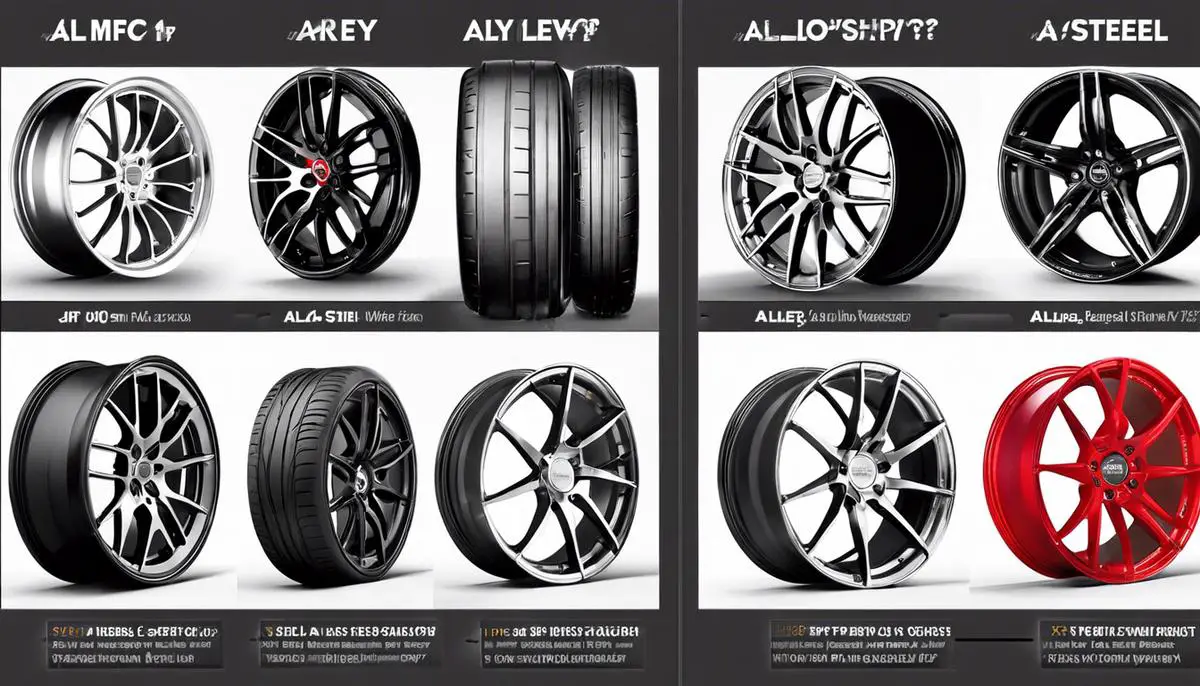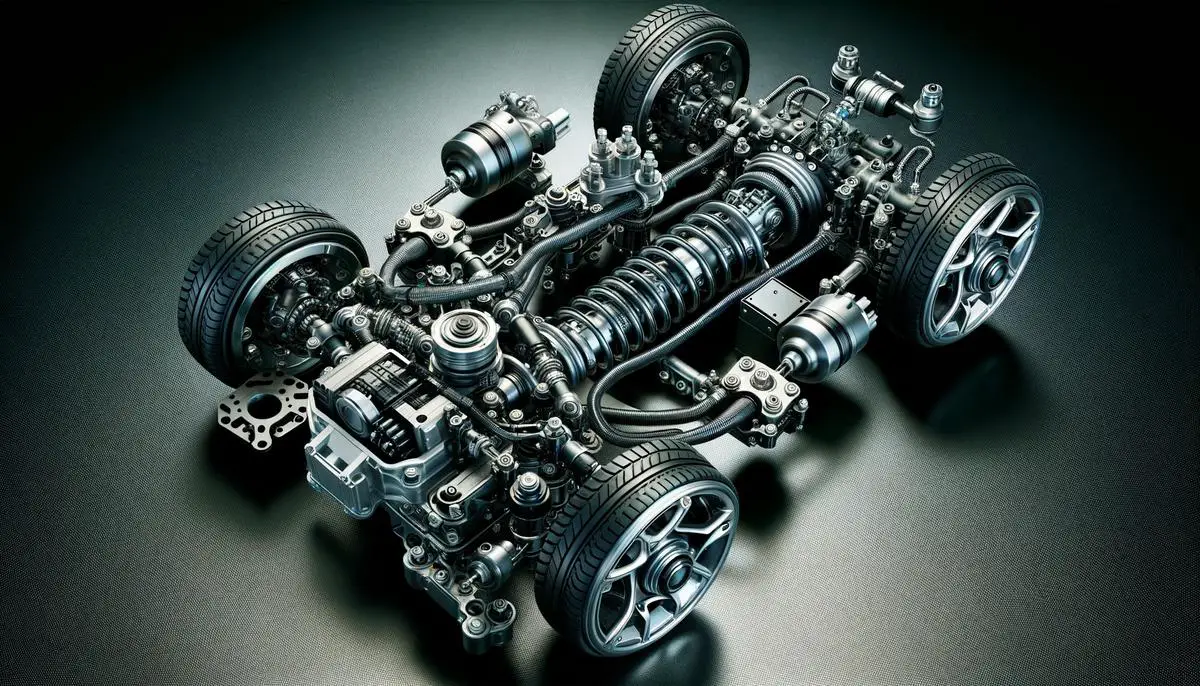The sleek curvature of a car’s body or the subtle addition of a rear spoiler might catch the eye as aesthetic choices, but these design elements serve a much more critical purpose behind the scenes. The study of air currents swirling around vehicles, or automotive aerodynamics, is a fundamental factor in the quest for efficiency, performance, and handling on the road. From the earliest horseless carriages to the latest electric marvels, the journey of car design has been intricately tied to the manipulation of aerodynamic forces. This essay peels back the surface to reveal how air resistance and the quest to minimize it have shaped the automobile industry, leading to designs that slip more quietly through the wind, sip fuel more frugally, and hug the road with greater tenacity.
Contents
Basics of Aerodynamics in Car Design
Catching the Wind: The Magic of Aerodynamics in Cars
Ever wonder how some cars slip through the air like a hot knife through butter while others seem to fight against every gust of wind? That’s all thanks to aerodynamics, folks—where science meets the open road. Aerodynamics is like the secret sauce that makes cars faster, more efficient, and way cooler to look at. Let’s dive right into why it’s such a big deal in the world of automotive engineering.
Picture this: a car speeding down the highway, but instead of smoothly sailing along, the air around it is pushing and pulling like crazy. That’s what happens when aerodynamics aren’t part of the design, and it’s a no-go for a smooth ride or saving cash at the gas station. Aerodynamics is all about the air flow—making sure it goes over, under, and around a car in the best possible way.
When engineers design a car, they think a lot about “drag.” No, not the race kind—the air kind. Drag is like an invisible hand holding a car back. The more aerodynamic a car is, the less drag it has. And guess what? Less drag means you need less fuel to get from A to B. That’s music to anyone’s ears in a world where gas prices can make your wallet cry.
But wait, it’s not just about saving pennies. Aerodynamics also equals speed. Sports car buffs and race teams know this in their sleep. A sleek, well-designed car cuts through the air better, which can mean the difference between first place and second in a high-speed chase to the finish line.
Sticking to the road is another biggie. Have you ever seen those cool rear spoilers on race cars? They’re not just for looks. Aerodynamics uses things like spoilers to help cars hug the road by pushing down on them. This downforce means better grip, killer turns, and more fun behind the wheel.
Safety’s another reason engineers geek out over aerodynamics. A car that’s smooth with the wind is a car that’s more stable on the highway and easier to handle in rough weather. Nobody likes a gust of wind that makes their car feel like it’s about to take flight. Good aerodynamics gives cars a steadier feel and keeps drivers in control.
Don’t forget about the planet, either. More efficient cars plus less fuel consumption equals one big win for Mother Earth. Every little bit of efficiency helps keep those ice caps from turning into swimming pools.
So, next time you see a car with a sleek shape and fancy fins, remember that’s aerodynamics at work. It’s making that ride quicker, cheaper, and a heck of a lot safer. It’s a game-changer for how cars are designed and how they own the road. It might be a complicated science, but the results are as clear as day: better performance, savings at the pump, and that sweet satisfaction of knowing you’ve got the wind on your side.
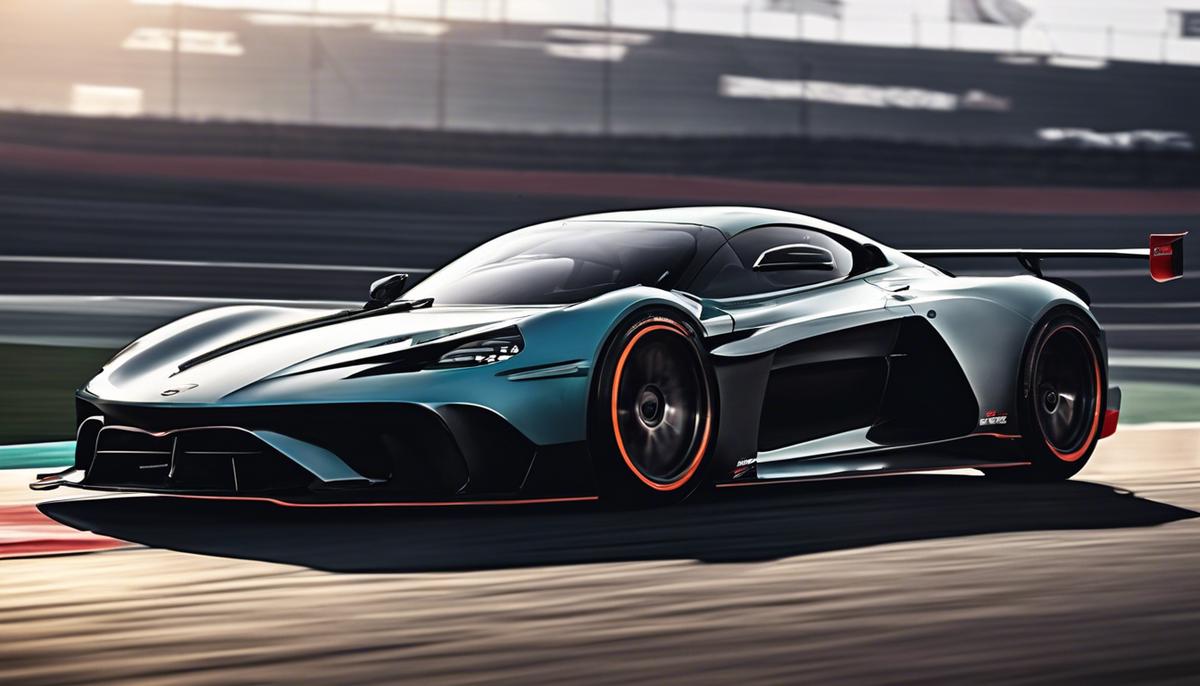
Aerodynamic Features in Modern Vehicles
Let’s dive into the latest trends in car aerodynamics that are pushing the boundaries of efficiency, speed, and style!
Active Aerodynamics:
Imagine a sports car that can change its shape while you’re driving. That’s right, active aerodynamics use parts of the car that move automatically to adjust the airflow. These can include active grille shutters that close at high speeds to reduce resistance, or rear wings that tilt at the perfect angle for maximum downforce.
Underbody Panels:
When it comes to slicing through the air smoothly, underbody panels are silent heroes. These flat surfaces cover the usually uneven under-car area, helping cars slip through the air with less drag. Think of it like swimming with a sleek suit versus baggy clothes – the difference is huge!
Vortex Generators:
Usually seen as small fins on the roof or rear of a car, vortex generators do a fine job at controlling how the air behaves around the vehicle. They help in keeping the airflow attached to the car’s surface for longer, thereby cutting down on the turbulence and drag that slows cars down.
Diffusers:
Look at the back underside of some cars, and you might spot this fancy piece of aerodynamic kit. Diffusers are like funnels that help speed up and smooth out the air passing under the car. By doing so, they reduce pressure underneath and give the back of the car a good suction to the road, which is great for stability.
Wheel Aerodynamics:
Wheels might be for rolling, but they can also mess with the air they churn through. That’s why some cars now sport special designs and even shrouds to keep air flowing smoothly around them, cutting down on that pesky resistance that can slow a car down.
Air Curtains:
These nifty features are like invisible magicians guiding air. Air curtains are slots in the front bumper that direct air to flow over the wheels instead of getting caught in the wheel wells. This keeps the air moving along the sides of the car instead of swirling around the wheels, which also helps with drag.
So there you have it, the freshest aerodynamic tricks in the automotive world. Whether these features are under the car, hidden in the grille, or smoothing out the air around the sides and back, every single one plays a part in making cars faster, more fuel-efficient, and cooler to look at. Next time you’re out and about, take a closer look at the cars you see – you might just spot some of these aerodynamic features in action!

Aerodynamics in Electric and High-Performance Cars
Harnessing Aerodynamics for Electric and Performance Vehicles: Beyond the Basics
When we dive into the world of high-performance and electric vehicles, aerodynamics becomes more than just cutting through the air; it’s a critical component of design that demands meticulous engineering. Let’s explore how the principles of airflow are specifically tailored to enhance these modern marvels on wheels.
For electric vehicles (EVs), managing drag isn’t just about speed—it’s about maximizing that precious battery life. Designers craft EV shapes to be as sleek as possible, oftentimes more so than their gasoline-powered counterparts. The goal is to stretch out every bit of energy the battery provides by reducing resistance the car encounters as it glides along the highway.
This is where the magic happens – electric cars often sport smoother front grilles since they don’t require as much air for cooling an engine, unlike traditional cars. EVs also employ very flat undercarriage designs, eliminating places where air might get caught and cause turbulence. These designs are clever tricks to help these vehicles sneak through the air with less effort.
But what about those souped-up performance cars that get hearts racing? Here, aerodynamics is pushed to the limits. These cars are not only designed to cut through the air but also to use the air to their advantage. Aerodynamics can be tailored to force the car down onto the track, increasing traction, and allowing for eye-watering speeds around corners.
One of the high-tech features seen in performance vehicles is adaptive aerodynamics. These systems can alter the angle of spoilers or even the shape of body panels in real time, reacting to changes in speed or driving conditions. It’s like having a car that transforms itself to be more aerodynamic the faster you go.
Performance cars sometimes feature large air intakes that gulp in air to cool powerful engines and brakes. These intakes are strategically placed to minimize disruption to airflow and be as aerodynamically efficient as possible. Even the placement and design of side mirrors get attention to ensure they don’t act like mini parachutes sticking out the sides.
Let’s not forget tires – they’re the only part of the car that actually touches the road. High-performance cars wear wide tires with special treads, but they also need to make sure those tires don’t undo all the good work of the body’s aerodynamics. Clever wheel designs help direct airflow smoothly around the tires, reducing drag.
For the rocket-like performance cars, they take it a step further with super-smooth transitions between body panels to minimize air getting “stuck” on the car. Every scoop, crease, and curve on the vehicle serves a purpose, whether it’s cooling the brakes or sticking the car to the tarmac like glue at 100 mph.
Aerodynamics for EVs and performance cars is an artful blend of science and design – a testament to how form and function walk hand-in-hand towards the same goal: traveling faster, further, and more efficiently. The future of motoring hinges on these aerodynamic innovations, shaping an exhilarating, eco-friendly ride into the horizon. No doubt, with the pace of progress, there’ll be even more breakthroughs that’ll leave everyone breathless – with barely a whisper of wind resistance.
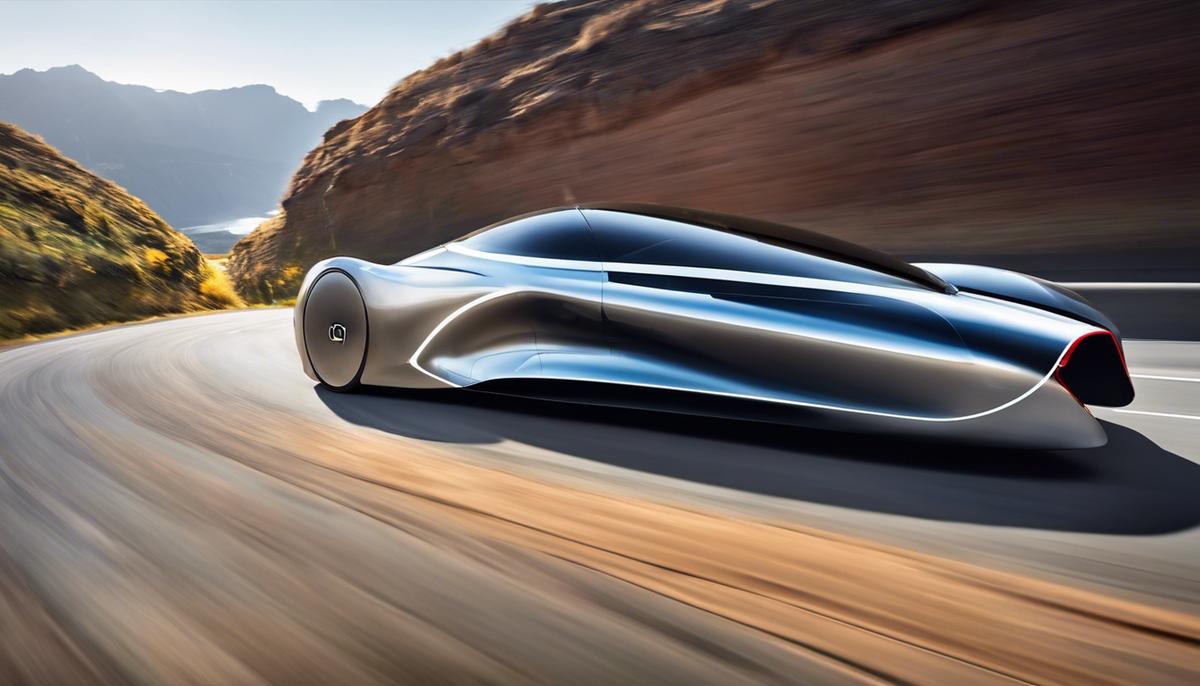
DIY Aerodynamic Modifications
When it comes to car modifications, the hobbyist community is always abuzz with different ways to boost performance or efficiency. While many mods add horsepower or tweak the suspension, there’s a growing conversation around DIY aerodynamic modifications. Can these adjustments actually make a difference in your car’s efficiency? Let’s dive into some practical tips and insights.
First up, let’s talk about side skirts. They’re more than just an aesthetic upgrade; these long, flat extensions run along the lower edge of your car’s sides. By redirecting air to flow more smoothly past the sides, rather than tumbling into the undercarriage, they can help reduce drag. Remember, smoother airflow equals less resistance!
Next, consider the rear wing or spoiler. While we know they can aid in downforce, there’s more to the story. A well-designed rear wing might cut through the air more effectively, potentially reducing drag ever so slightly. This isn’t about making your ride ‘Fast & Furious’ flashy—it’s about fine-tuning the airflow.
Front air dams, sometimes known as splitters, are another aerodynamic elements to discuss. Aside from giving race cars that mean, hugging-the-ground look, a properly installed front air dam can help channel air flow away from the turbulent underside of the car, reducing lift and, therefore, drag. It’s a delicate balance, though—too low or too aggressive and you might find more cons than pros.
Venturing into less common territory, tire spats or “fairings” can be an interesting aerodynamic tweak. These little additions are placed just in front of the tires, helping to guide air smoothly around rather than letting it collide chaotically with the tire wall. They’re subtle but can be part of a larger strategy to incrementally improve efficiency.
And let’s not forget about sealing the gaps. Sure, car manufacturers spend countless hours ensuring the panels fit together like a jigsaw, but there’s always room for improvement. Small DIY efforts, like adding rubber seals or improving the fitment of body panels, can help air flow more seamlessly over the vehicle.
A note of caution for the DIY enthusiast is in order: aerodynamics is a field of precision. Every modification has a trade-off, and sometimes, altering one aspect can lead to unforeseen consequences in another. For example, reducing drag effectively might inadvertently increase lift, which can affect the car’s handling. Therefore, it’s essential to do thorough research or consult with an aerodynamics specialist before diving in.
Moreover, testing is key. Unless you have access to a wind tunnel, it’s going to be tricky to measure the actual impact of your DIY mods. Still, fuel economy monitors and GPS-based apps can help you measure performance improvements in real-time. They’re not as precise as what the pros use, but they’ll give you an idea of whether your tweaks are making a difference.
In conclusion, DIY aerodynamic modifications have the potential to nudge your car’s efficiency in the right direction. It requires a blend of knowledge, precision, and a bit of trial and error. Whether it’s side skirts for smoother side flow, rear wings for improved drag, or any of the other aerodynamic hacks, there’s always something in the car modder’s toolkit to explore. Just remember to mod wisely and never at the cost of your safety. Keep it sleek, keep it efficient, and keep experimenting.

The Future of Aerodynamics in Automobiles
Get ready, gearheads and car enthusiasts!
The field of car aerodynamics is swiftly accelerating, and if you’re someone who loves to stay ahead of the curve, buckle up—we’re diving into the latest breakthroughs expected to reshape our rides.
Imagine cars that slice through air like never before, using smart materials to adapt their shape on the fly. These materials, think memory alloys or advanced composites, could revolutionize car designs. With the ability to change surface textures in response to speed and conditions, they could reduce drag even further, leading to even more savings at the pump and greater electric vehicle (EV) ranges.
Next up, picture the power of predictive aerodynamics using cutting-edge computing. Advanced sensors and algorithms might predict airflow changes and adjust vehicle aerodynamics proactively, ensuring optimal performance at all times. Gone will be the days of fixed aerodynamic designs—cars shall morph as needed, like high-tech chameleons.
By harnessing the might of 3D printing, custom aerodynamic parts are set to become more accessible, letting manufacturers and hobbyists alike experiment with intricate designs once considered too complex or expensive to produce. This democratization of design could usher in a new era of hyper-personalized vehicles where each car on the road is as unique as its driver’s driving habits.
Anticipate, too, leaps in wheel design, where engineers channel their wizardry into crafting wheels that not only look impressive but play a critical role in minimizing air turbulence. These advanced wheels could incorporate active elements that adjust spokes or rims to the optimum aerodynamic position, whether cruising on a highway or hugging tight curves on a back road.
Expect to see quiet breakthroughs gift our highways with cars that barely make a whisper. Enhanced aerodynamics can lead to noise reduction, resulting in a peaceful cabin experience, especially essential as the world shifts towards the serene hum of EVs.
Peer into the not-too-distant future, and we might also see a broader adoption of solar body panels. Not only would these panels serve dual functions—generating energy and reducing drag—but they could also be engineered to self-clean, ensuring they’re always operating at peak efficiency.
As computational power continues to soar, computational fluid dynamics (CFD) simulations will only grow more accurate, making it feasible to streamline vehicles right from a digital drawing board. No wind tunnel? No problem. Virtual testing could become the norm, saving time, resources, and paving the way for even more mind-bending designs.
In the quest for the ultimate aerodynamic car, it’s not just about staying grounded but also staying connected. Vehicle-to-vehicle (V2V) communication could optimize traffic flow by organizing cars to minimize collective drag, making car ‘swarms’ the next big thing that could enhance efficiency on a large scale.
It’s a thrilling time to be a car enthusiast. The future of car aerodynamics isn’t just about cutting through air—it’s about cutting-edge technology that’ll redefine what we drive and how we drive it. So, keep your eyes on the horizon—the next aerodynamic marvel could be just around the bend, ready to leave us positively wind-blown!
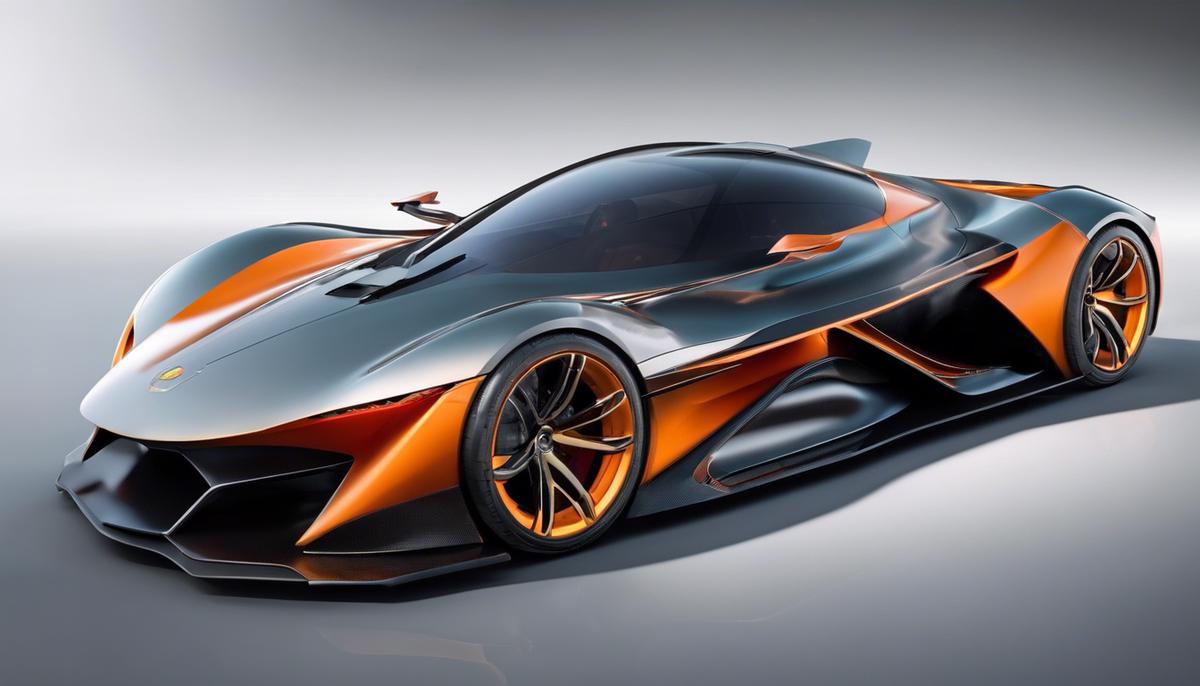
As we hurtle towards an exciting horizon of automotive design, the intricate dance between vehicle and airflow remains central to advances in efficiency and performance. The interplay of emerging materials, cutting-edge design software, and revolutionary vehicular concepts ensures that the field of aerodynamics will continue to catalyze remarkable transformations in our everyday travel companions. While the quest for the perfect balance between form and function is far from over, one thing remains clear: the promise of tomorrow’s automobiles is as boundless as the air that envelops them, shaping their journey from the blueprints of innovation to the pavements of practicality.

